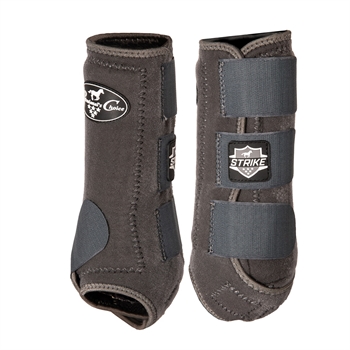Leg protection
Jumping gaiters and bells can extend the life of your horse's legs!When a horse jumps, it has a high risk of banging its legs against each other; both because it typically has a large canter, has to make sharp turns and easily gets into extreme positions on its trip around the track. If the horse frequently bumps its legs against each other, there is a high risk of tendon and bone damage. Naturally, horses don't have much padding on their legs, as tendons and bones lie just under the skin. Especially from the front knee down and from the hocks down, bones and tendons are exposed as there are no muscles to protect them. If the jumping horse has a tendency to throw or bang its legs against each other, you can protect against blows by giving the horse jumping gaiters on the front and hind legs, as well as bells if the horse often kicks off shoes or steps on its own ball. Show jumpers most often use jumping gaiters for their horses, as the jumping gaiters are specifically designed for the jumping horse's need for leg protection. The special feature of the jumping gaiter is that it has a hard shell - for example, made of plastic. This shell is very effective at absorbing the force of the impact of a horse's leg when galloping. |

